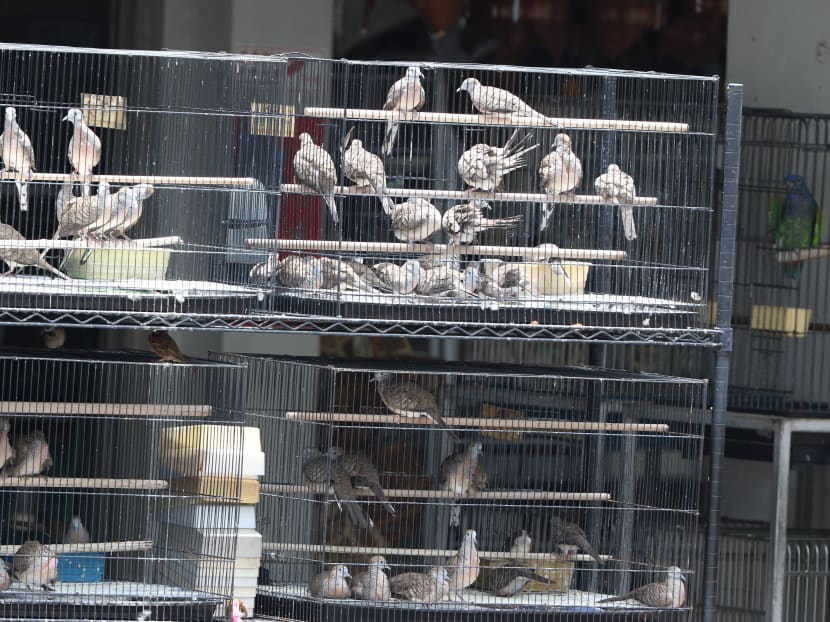Study reveals effects of poorly run wildlife trade on S’pore’s bird species
SINGAPORE — Seven in 10 birds offered for sale in shops here are species not native or previously native to Singapore, raising concerns over the dangers of a poorly run trade and overharvesting, a study released on Sunday (Feb 19) has found.

Zebra Doves Geopelia striata were among the most commonly encountered birds in pet stores in Singapore. Photo: James A Eaton
SINGAPORE — Seven in 10 birds offered for sale in shops here are species not native or previously native to Singapore, raising concerns over the dangers of a poorly run trade and overharvesting, a study released on Sunday (Feb 19) has found.
Conducted by wildlife-trade monitoring network Traffic, the study’s release coincides with the Asian Songbird Trade Crisis Summit, which began on Sunday and ends on Tuesday at Jurong Bird Park.
Experts from across the globe are drawing up and implementing a plan of action to avert a crisis confronting the region’s songbirds, which are being threatened by trade.
The study — an overview of the bird species in Singapore’s pet shops — showed that 46 per cent of the 14,085 birds from more than 100 species it documented over four days were Oriental White-eyes, or Zosterops palpebrosus. This was a once-native species wiped out predominantly through bird trapping.
Ms Kanitha Krishnasamy, a co-author of the study, said the presence of nearly 6,500 such birds in the Singaporean market was a “poignant reminder of the dangers of persistent overharvesting and (a) poorly managed trade”.
The Oriental White-eye was among the species cited as of “immediate concern from bird trapping in Asia” at the first summit in 2015.
“Singapore lost its Oriental White-eyes largely through excessive trapping, which should have hoisted a red-flag warning that the ongoing trade will impose the same fate on this and other species elsewhere,” said Ms Krishnasamy, who is Traffic in South-east Asia’s senior programme manager.
Meanwhile, the study noted that 97 per cent of birds found here were species not subject to international regulation, since they were not listed in the Convention on International Trade in Endangered Species of Wild Fauna and Flora.
With trade occurring largely below the radar, “there’s often little, if anything, known of its impact on wild populations”, Traffic said.
Among other things, the study urged clarity in the protocols in place to regulate species not covered by the treaty, as well as non-protected species that are imported into and exported from Singapore in large numbers.
It also called for a disclosure of any trade quotas, the regulation of captive breeding and registration details to enable civil society groups to aid conservation efforts. The study also found that more than 30 per cent of the non-native species in Singapore were from Central and South America, underscoring the country’s “specialist role” in trading birds from that region.
That most of the species here are non-native highlights the need for Singapore, where the volume of birds is comparable to Indonesia’s, “to be particularly vigilant about the impact of trade elsewhere in Asia and beyond,” said Ms Krishnasamy.
Members of the public who suspect illegal trading activities should report them to the Agri-Food and Veterinary Authority of Singapore or via Traffic’s Wildlife Witness app (www.wildlifewitness.net).











